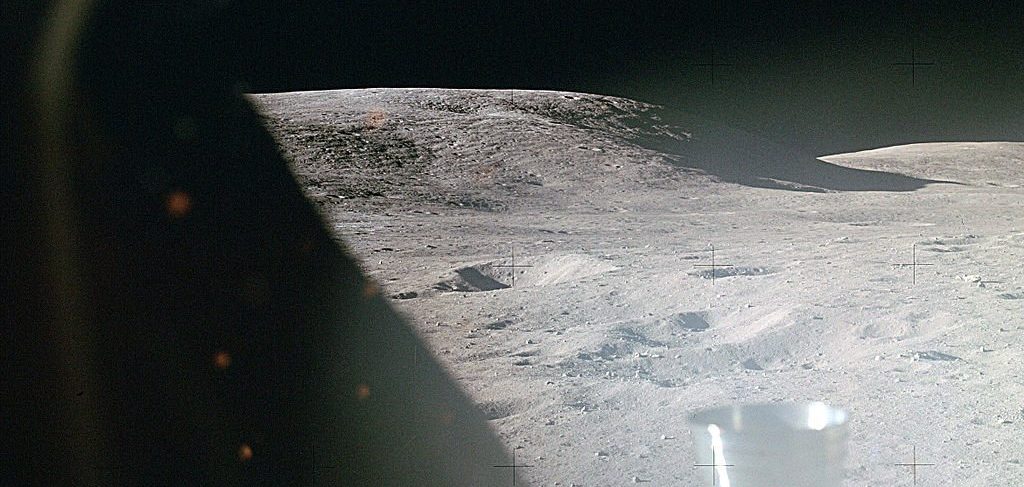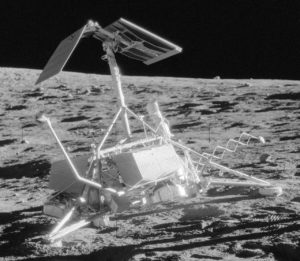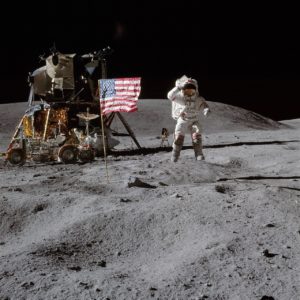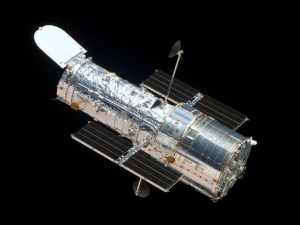
Photo: The view through the window of the Lunar Module Orion shortly after Apollo 16’s landing on the surface of the Moon | NASA
April 20, 1967: Surveyor 3 soft-lands on the Moon

Surveyor 3, shot by the Apollo 12 astronauts over two years after its mission ended | NASA
Surveyor 3 was the third lander of NASA’s Surveyor program sent to explore the surface of the Moon in 1967, as well as the first to collect a sample of surface soil. The lander was launched on April 17, 1967, and it soft-landed on the Moon three days later on April 20, 1967, as planned. Once on the Moon’s surface, Surveryor 3 gathered a scoop of lunar soil and held it in front of its television cameras so it could be photographed and analyzed back on Earth. Its mission lasted a total of 16 days before mission control lost contact. Surveyor 3 was later visited by Apollo 12 astronauts Pete Conrad and Alan Bean in November of 1969, who excised several components of the lander and returned them to Earth for study.

John W. Young on the Moon during Apollo 16 mission | NASA
April 20, 1972: Apollo 16 lands on the Moon
Apollo 16 was the tenth mission to successfully land a crew on the surface of the Moon. The shuttle, crewed by Commander John Young, Lunar Module Pilot Charles Duke and Command Module Pilot Ken Mattingly, was launched from the Kennedy Space Center on April 16, 1972. As planned, Young and Duke landed the Apollo Moon Lander Orion on the Moon’s surface on April, 20, 1972 and spent 71 hours collecting samples and conducting experiments. The crew safely returned to Earth on April 27.
April 25, 1990: Hubble Space Telescope is deployed

The HST in orbit, as seen from the Space Shuttle Atlantis during a servicing mission | STS
NASA’s Hubble Space Telescope (often referred to as HST or simply the Hubble) is a space telescope that was launched into low Earth orbit on April 25, 1990 and remains in operation today. Though the Hubble was not the first space telescope to be launched, it is one of the largest and most versatile and has been continually updated with new telescopic technology. The Hubble telescope is named after astronomer Edwin Hubble and is one of NASA’s four Great Observatories, along with the Compton Gamma Ray Observatory, the Chandra X-ray Observatory, and the Spitzer Space Telescope.